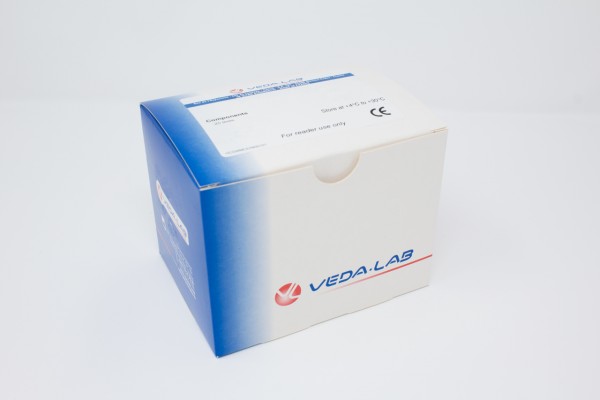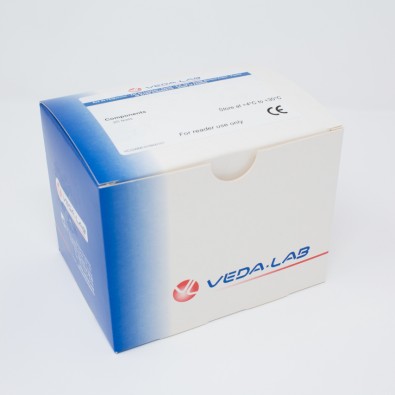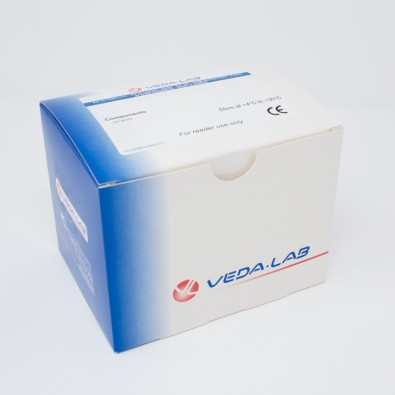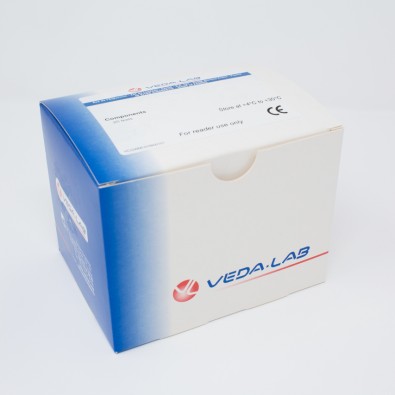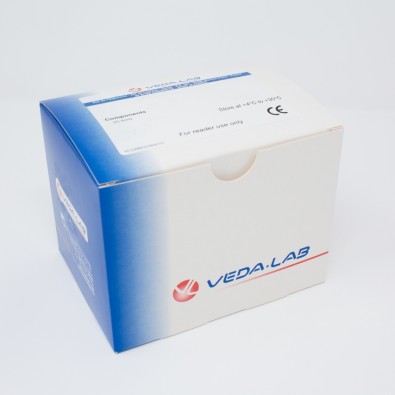Check-1 AFP Quantitative Rapid Test for Easy Reader+® 10mins
Check-1 AFP Quantitative Rapid Test for Easy Reader+® 10mins (23091) is an immunochromatographic rapid test for the quantitative detection of AFP (alpha-fetoprotein) in whole blood, serum or plasma. Manufactured by VEDALAB.
Alpha-fetoprotein (AFP) is a single-chain glycoprotein with a molecular weight of approximately 70,000 (1). It is produced by the fetal yolk sac and proximal structures of the liver and gastrointestinal tract. In the human fetus, AFP is a major serum protein which reaches a level of several milligrams per milliliter at week 12 of gestation and then drops to trace concentration in normal non pregnant adult.
The clinical value of AFP as a tumor marker was not immediately appreciated because the assays used for quantitation were not sensitive enough to detect the nanogram amounts associated with early disease. As more sensitive radioimmune assays became available, the utility of AFP as a tumor marker became increasingly apparent.
Marked increases are found in malignant tumors in childhood, such as hepatoblastomas and nephroblastomas and in hepatocellular carcimona and certain testicular tumours in adults. Less commonly, malignant tumours of the gastro intestinal tract and other organ systems with massive hepatic metastases are associated with increased concentrations of AFP in serum (2, 3).
The AFP-CHECK-1 test is a rapid quantitative assay for the detection of human AFP in serum, plasma or whole blood. The method employs a unique combination of monoclonal-dye conjugate and polyclonal solid phase antibodies to identify AFP in the test samples with a high degree of specificity.
As the test sample flows through the absorbent device, the labelled antibody-dye conjugate binds to the AFP forming an antibodyantigen complex. This complex binds to the anti-AFP antibody in the positive reaction zone (T) and produces a pink-rose colour band.
In the absence of AFP, there is no line in the positive reaction zone (T). The reaction mixture continues flowing through the absorbent device past the reaction zone (T) and control zone (C). Unbound conjugate binds to the reagents in the control zone (C) producing a pink-rose colour band, demonstrating that the reagents are functioning correctly.
